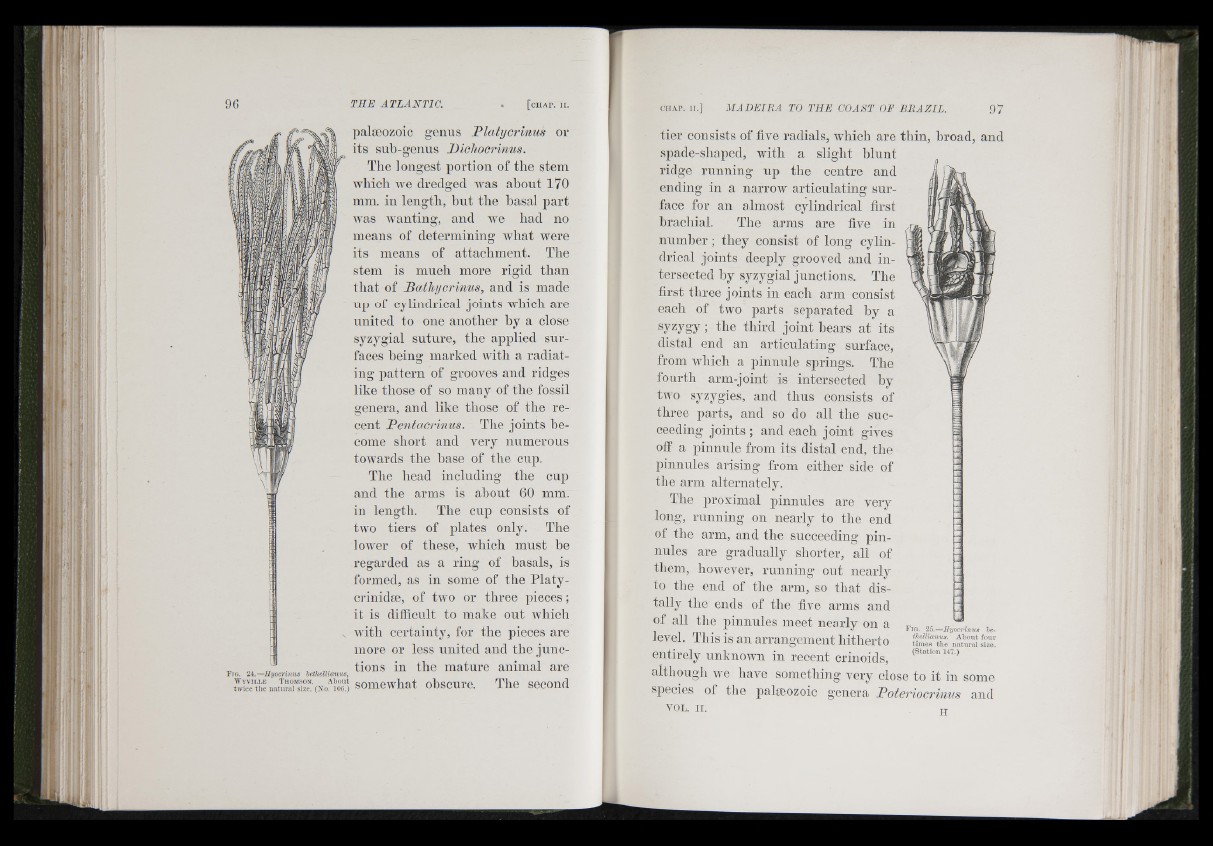
if:
»U;
I f
-.a I
palaeozoic genus Platyci'inus or
its sub-O»enus DicJiocihius.
The longest portion of the stem
which we dredged was about 170
mm. in length, but the basal part
was wanting, and we had no
means of determining Avhat were
its means of attachment. The
stem is much more rigid than
that of Bathycrinus, and is made
up of cylindrical joints Avhich are
united to one another hy a close
syzygial suture, the applied surfaces
heincp marked with a radiat-
ing pattern of grooves and ridges
like those of so many of the fossil
genera, and like those of the recent
Bentacrinus. The joints become
short and very numerous
towards the base of the cup.
The head including the cup
and the arms is about 60 mm.
in length. The cup consists of
two tiers of plates only. The
loAver of these, which must be
regarded as a ring of hasals, is
formed, as in some of the Platy-
crinidse, of two or three pieces;
it is difficult to make ont which
with certainty, for the pieces are
more or less united and the junctions
in the mature animal are
The second
Fig. 24.— H yo c r in u s h d k e llia n u s,
W y v i i .l e I h o m b o n . About c n m A w L ‘iT' n l j i i p m ’ p
twice t he natural size. (Xo. 106.) i iOl i i eVN l l d l U U i ^ C U i e .
tier consists of five radials, Avhicb are thin, hroad, and
spade-shaped, with a slight blunt
ridge running up the centre and
ending in a narrow articulating surface
for an almost cylindrical first
hrachial. The arms are five in
nnmber; they consist of long cylindrical
joints deeply grooved and intersected
by syzygial junctions. The
first three joints in each arm consist
each of two parts separated hy a
syzygy ; the third joint bears at its
distal end an articulating surface,
from Avhich a pinnule springs. The
fourth arm-joint is intersected by
tAvo syzygies, and thus consists of
three parts, and so do all the succeeding
joints ; and each joint gives
off a pinnule from its distal end, the
pinnules arising from either side of
the arm alternately.
The proximal pinnules are very
long, running on nearly to the end
of the arm, and the succeeding pinnules
are gradually shorter, all of
them, lioAA'ever, running out nearly
to tbe end of tbe arm, so th a t distally
the ends of the five arms and
of all the pinnules meet nearly on a
level. Tliis is an arrangement hitherto
entirely unknoAvn in recent criuoids,
altbougb Ave have something very close to it in some
species of tbe palaiozoic genera Boteriocrmus and
VOL. IT.
Fig. 25.— H yo c r in u s he-
th e llia n u s. About four
times th e n a tu ra l size.
(Station 147.)